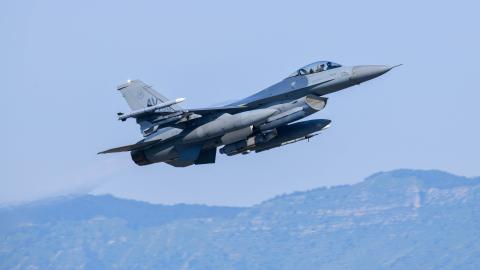Below are three lines of effort to shape Western military policy to achieve a strategic Ukrainian—and thereby Western—victory against the Russian invasion.
First Line of Effort: Revive the Cold War NATO concept of Follow-on Forces Attack (FOFA) and adapt it to the Ukrainian military’s way of warfighting. FOFA was designed to conventionally strike enemy combat formations stretching from just behind the frontline troops to deep into the adversary’s rear. The strategic intent is to reduce the enemy units into a “manageable ratio” before they reach the central defensive lines. The FOFA Shopping Cart for Ukraine includes:
• The US’s MGM-140 Army Tactical Missile Systems (ATACMS). The ATACMS would bring an unprecedented improvement to Ukraine’s long-range fire capacity, boosting the 50-miles effective range of HIMARS to 186 miles (some 300 kilometers). Furthermore, its high-precision and advanced warhead configuration would offer a critical capability to attack Russian rocket and loitering munitions launchers, large ammunition depots, and command and control (C2) nodes, as well as air contingents within the range.
• American Gray Eagle Drones. Manufactured by General Atomics, the MQ-1C Gray Eagle comes with an advanced sensors suit and a potent weapons configuration, including AGM-114 Hellfire missiles. Being able to fly above the engagement envelopes of man-portable air defense systems (MANPADS) and having good airborne endurance (at least 27 hours for the mainstream variant, and up to 40 hours for the extended-range upgrade), the unmanned system can offer notable tactical flexibility to the Ukrainian Armed Forces.1
• F-16 Combat Aircraft. An ambitious effort would give Ukraine a comprehensive airpower capability development program revolving around the F-16. At present, Ukrainians are flying very low and for a brief period in each sortie to avoid Russian surface-to-air missile (SAM) systems and Russia’s better air-to-air capabilities (for example, Su-35s equipped with R-77 missiles). F-16 aircraft carrying advanced AMRAAM beyond-visual-range air-to-air missiles can address Ukraine’s problem to a large extent. F-16s would also unlock all the advanced capabilities of the AGM-88 HARM anti-radiation missiles that were already transferred by the US. At present, the Ukrainian Air Force uses the AGM-88 missiles, with limited operational potential, on its Soviet-Russian Mig-29 aircraft.
Second Line of Effort: Augment Ukraine’s air and missile defense network. This objective is particularly important given the fact that the Russian military will keep launching Iran-made loitering munitions, and probably missiles, into Ukraine in larger numbers day by day.
• After dragging its feet for a long time, the Biden administration recently agreed to support Ukraine with National Advanced Surface-to-Air Missile System (NASAMS) short-to-medium-range air defense systems. Coproduced by American Raytheon and Norwegian Kongsberg, the system is prestigious as it protects Washington, DC.
• The US and its allies should not treat this transfer as a one-time event, like a cortisone shot. Instead, NATO capitals need to use it as one step that will help the Ukrainian Armed Forces transition toward Western air and missile defense solutions.
• Apart from sending NASAMS, the West needs to keep transferring MANPADS to Ukrainian units in large numbers. Russia’s chronic shortfalls in smart munitions wreak havoc on aircraft, including advanced platforms like the Su-30, forcing the Russian platforms to fly at lower altitudes to drop unguided bombs. This pattern makes the Russian aircraft vulnerable.
Third Line of Effort: Capitalize on the Ukrainian military’s advances in combined arms maneuver warfare through a Europe-led main battle tank assistance program.
• From now on, NATO capitals should capitalize on the lessons learned from the Kharkiv offensive and focus on augmenting the Ukrainian military’s decisive edge in combined arms maneuver warfare supported by long-range fire capabilities.
• Ukraine urgently needs more advanced main battle tanks. Time and again, Kyiv has asked for the American Abrams and German Leopard-2s, but the West has disappointingly turned down these requests.2 Continental Europe, especially Germany, now needs to initiate a Leopard-2 military assistance consortium. European writings suggest that a consortium of Leopard-2 operator countries can rapidly donate 90 tanks to Ukraine, which would suffice to build a large armored brigade.3 According to the Spanish press, Madrid was ready to send up to 40 Leopard-2s to Ukraine; however, the German government blocked this transfer in August.4
• Apart from the Leopard-2 transfers, NATO capitals should continue equipping the Ukrainian military with anti-tank weapons, especially those with top-attack capabilities, such as Javelin and NLAW. These weapons have proven to be very effective against Soviet-Russian tank design philosophy, since the projectile directly hits the ammunition after penetrating the tank with a perpendicular angle. Indeed, this is why many Russian tanks have been “decapitated.” 5














